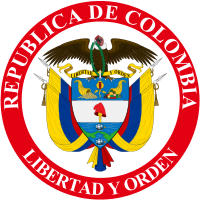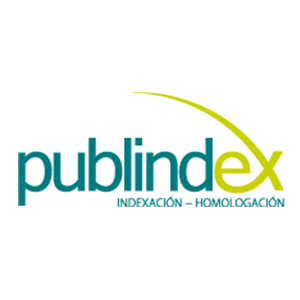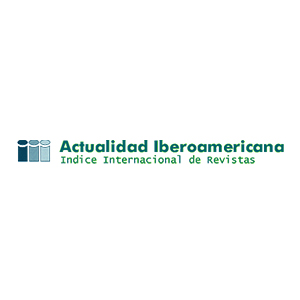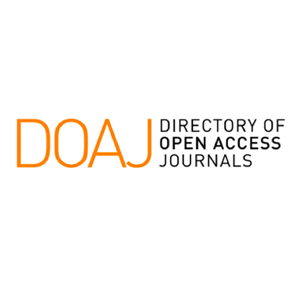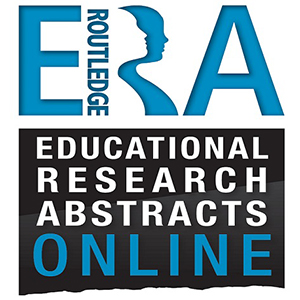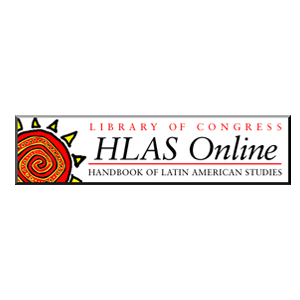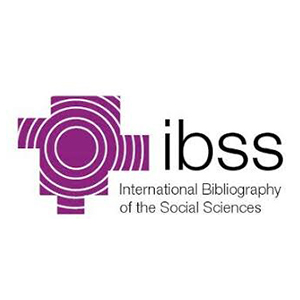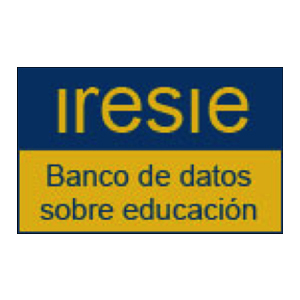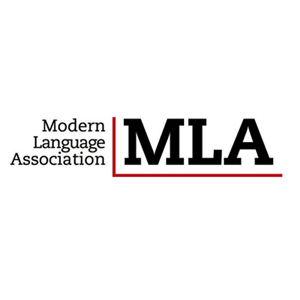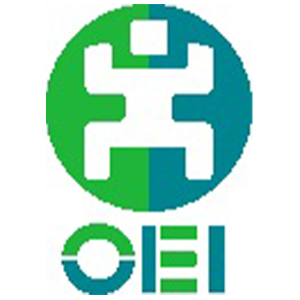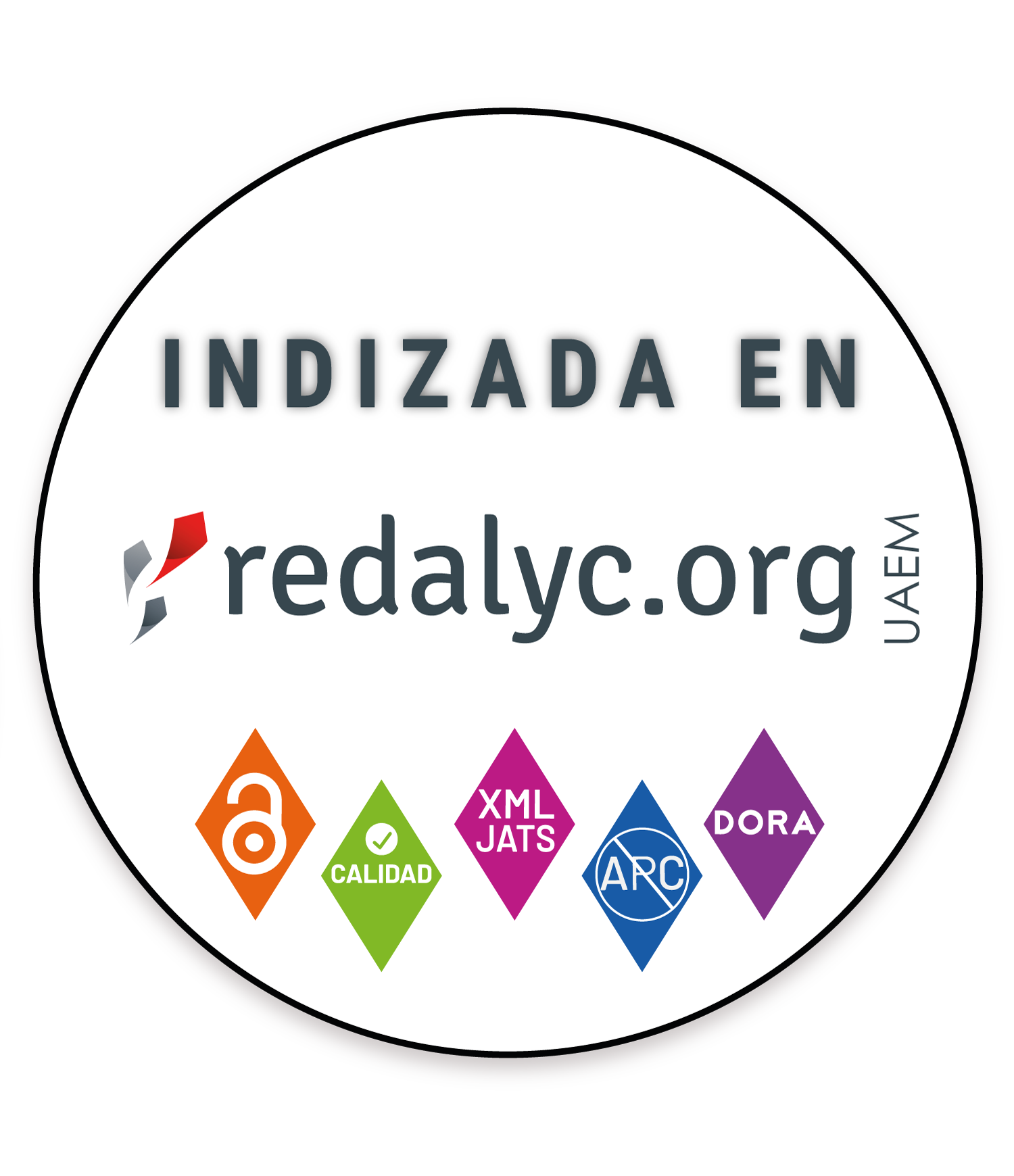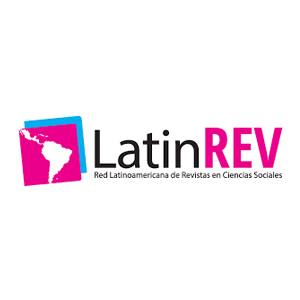How do Children Value Educational Inclusion? Opinions from Primary Schools
¿Cómo valoran los niños la inclusión educativa? Opiniones desde escuelas de educación primaria
Como as crianças valorizam a inclusão educacional em suas escolas? Opiniões do ensino fundamental
En el contexto internacional, los comportamientos de exclusión educativa se ocultan bajo un clima de aparente inclusión con múltiples declaraciones, políticas, protocolos y programas. La voz de los alumnos es una poderosa herramienta para sensibilizar sobre los problemas de la diversidad y las formas de aprendizaje en las escuelas. El presente artículo aborda por primera vez la realidad de las aulas desde la perspectiva inclusivaen la Comunidad Autónoma de Galicia (España). Se utilizó una metodología cuantitativa, descriptiva-exploratoria, mediante la aplicación del cuestionario Index for Inclusion (Booth & Ainscow, 2015) a una muestra de 211 alumnos de educación primaria. Los resultados mostraron una percepción moderadamente buena de los alumnos sobre la inclusión en sus centros educativos. Su percepción más positiva se relacionaba con la cultura y las políticas inclusivas, más que con su aplicación práctica. La edad fue una variable de gran importancia en este estudio, ya que logró explicar más del cincuenta por ciento de los re- sultados del índice. Los niños más pequeños fueron los que valoraron más positivamente el índice en comparación con los mayores. Esto demuestra su capacidad, desde temprana edad, de pensar de forma crítica sobre su entorno inmediato y las injusticias que se producen en él. Es necesario dar voz a los alumnos, ya que esta es una herramienta clave en la concienciación de los problemas relacionados con la diversidad, y en la configuración del aprendizaje en las aulas.
inclusión, atención a la diversidad, proceso educativo, necesidades del alumnado, responsabilidad escolar (es)
inclusão, atenção à diversidade, processo educational, necessidades do aluno, responsabilidade escolar (pt)
Agramunt, E., Cherp, I., & Penado, S. (2018). Nuestra experiencia en el aula por una escuela inclusiva. In A. S. Jiménez, M. I. Iglesias, A.
Picornell, J. J. Leiva, A. Pantoja & M. A. Conde (Eds.), Participación, políticas sociales y protección de la infancia: Aprendiendo con los niños y las niñas a construir sociedades (pp. 507-515). cipi.
Ainscow, M. (2020). Promoting inclusion and equity in education: lessons from international experiences. Nordic Journal of Studies in Educational Policy, 6(1), 7-16. https://doi.org/10.1080/20020317.2020.1729587.
Ainscow, M., & Messiou, K. (2018). Engaging with the views of students to promote inclusion in education. Journal of Educational Change, 19(1), 1-17. http://doi.org/10.1007/s10833-017-9312-1.
Alcáraz-Garcia, S., & Arnáiz-Sánchez, P. (2020). La escolarización del alumnado con necesidades educativas especiales en España: Un estudio longitudinal. Revista Colombiana de Educación, 78, 299-320. http://doi.org/10.17227/rce.num78-10357.
Amstrong, D., Amstrong, A. C., & Sangagou, I. (2011). Inclusion: By choice or by chance? International Journal of Inclusive Education, 15(1), 29-39. http://doi.org/10.1080/13603116.2010.496192.
Andújar, C., & Rosali, A. (2014). Enseñar y aprender en la diversidad: El desarrollo de centros y aulas inclusivas. In A. Marchesi, R. Blanco & L. Hernández (Eds.), Avances y desafíos de la educación inclusiva en Iberoamérica (pp. 47-60). OEI.
Arnáiz, P., & Azorín, C. (2014). Autoevaluación docente para la mejora de los procesos educativos en escuelas que caminan hacia la inclusión. Revista Colombiana de Educación, 67, 227-245. http://doi.org/10.17227/0120391.67rce227.245.
Azorín, P. (2016). Análisis de instrumentos sobre educación inclusiva y atención a la diversidad. Revista Complutense de Educación, 28(4), 1043-1060. http://doi.org/10.5209/RCED.51343.
Azorín, C., Ainscow, M., Arnáiz, P., & Goldrick, S. (2019). A tool for teacher reflection on the response to diversity in schools. Profesorado. Revista de Currículum y Formación de Profesorado, 23(1), 11-36. http://doi.org/10.30827/profesorado.v23i1.9142
Benítez, J. L., & Fernández, M. (2017). Desarrollo afectivo y social. In A. Muñoz (Ed.), Psicología del desarrollo en la etapa de da educación primaria (pp. 119-140). Pirámide.
Booth, T., & Ainscow, M. (2000). The index for inclusion: Developing learning and participation in schools. Centre for Studies in Inclusive Education.
Booth, T., & Ainscow, M. (2015). Guía para la evaluación y mejora de la educación inclusiva. Desarrollando el aprendizaje y la participación en las escuelas (Trad. G. Echeita, Y. Muñoz, C. Simón, & M. Sandoval). OEI. (Adapted from the third edition; original work published in 2011).
Brausteiner, M.-L., & Mariano-Lapudis, S. (2014). A perspective of inclusion: Challenges for the future. Global Education Review, 1(1), 32-43. https://files.eric.ed.gov/fulltext/EJ1055217.pdf.
Calatayud, M. A. (2019). Orquestar la Evaluación Inclusiva en los Centros Educativos. ¿Por dónde empezar? Revista Internacional de Educación para la Justicia Social, 8(2), 165-176. http://doi.org/10.15366/riejs2019.8.2.009.
Campoy, I. (2011). (Ed.). La educación inclusiva en España. Dykinson. Cohen, J. (1988). Statistical power analysis for the behavioral sciences. Erlbaum.
Coronado, P. J., & Belarte, J. (2018). Inclusión educativa: Superando barreras en el centro El Ave María de Benimàmet. In A. S. Jiménez, M. I. Iglesias, A. Picornell, J. J. Leiva, A. Pantoja, & M. A. Conde (Eds.), Participación, políticas sociales y protección de la infancia. Aprendiendo con los niños y las niñas a construir sociedades inclusivas (pp. 243-251). CIPI.
Corral, K. (2019). Educación inclusiva: Concepciones del profesorado ante el alumnado con necesidades educativas especiales asociadas a discapacidad. Revista Nacional e Internacional de Educación Inclusiva, 12(2), 171-186. https://revistaeducacioninclusiva.es/index.php/REI/article/view/439.
Curieses, R. (2015). La inclusión educativa: ¿opción o deber pedagógico? In M. L. Montánchez, S. Ortega & Z. Moncayo Educación inclusiva: Realidad y desafíos (88-97). CIPI.
de Boer, A., Pijl, S. J., & Minnaert, A. (2011). Regular primary schoolteachers’ attitudes towards inclusive education: A review of the literature. International Journal of Inclusive Education, 15(3), 331-353. http://doi.org/10.1080/13603110903030089
De Haro, R., Arnáiz-Sánchez, P. & Núñez, C. R. (2020). Teacher competences in Early Childood Education and inclusive education: Design and validation of a questionnaire. Revista Electrónica Interuniversitaria de Formación del Profesorado, 23(1), 1-20. https://doi.org/10.6018/reifop.407111.
Delors, J. (1996). Los cuatro pilares de la educación. In J. Delors, I. A. Mufti, I. Amagi, R. Carneiro, F. Chung, B. Garmck, W. Gorham et al. (Eds.), Informe a la Unesco de la Comisión internacional sobre la Educación para el Siglo xxi (pp. 91-103). Santillana. Ediciones Unesco.
Durán, D., Echeita, G., Giné, C., Miquel, E., Ruiz, C., & Sandoval, M. (2005). Primeras experiencias de uso de la Guía para la evaluación y mejora de la educación inclusiva (Index for Inclusion) en el Estado español. Revista Electrónica Iberoamericana sobre Calidad, Eficiencia y Cambio en Educación, 3(1), 464-467. https://revistas.uam.es/index.php/reice/issue/view/376.
Echeita, G. (2021). La educación del alumnado considerado con necesidades educativas especiales en la Lomloe. Avances en Supervisión Educativa, 35, 1-24. https://doi.org/10.23824/ase.v0i35.721.
Escarbajal, A., Corbalán, P., & Orteso, P. (2020). Análisis de la inclusión educativa en contextos vulnerables. Revista Colombiana de Educación, 78, 361-382. http://doi.org/10.17227/rce.num78-6776.
Figueroa, I., & Muñoz, Y. (2014). La guía para la inclusión educativa como herramienta de autoevaluación institucional: Reporte de una experiencia. Revista Latinoamericana de Educación Inclusiva, 8(2), 179-198. http://www.rinace.net/rlei/numeros/vol8-num2.html.
Fiuza-Asorey, M., Baña-Castro, M., & Losada-Puente, L. (2021). Reflections on a school for all: Perceptions of families and teachers regarding the culture, policy, and practice of inclusion in Galicia. Aula Abierta, 50(1), 525-534. https://doi.org/10.17811/rifie.50.1.2021.525-534.
Giménez, J. A. (2018). El reto de la equidad educativa. Metas educativas 2021. Journal of Supranational Policies of Education, 8, 1-14. https://doi.org/10.15366/jospoe2018.8.001.
Gómez, O. (2021). La atención a la diversidad en España: de la Ley General de Educación a la Lomloe. Inclusiones, 8, 463-480. https://revistainclusiones.org/index.php/inclu/article/view/2630.
Grande, P., & González, M.M. (2015). La educación inclusiva en la educación infantil: Propuestas basadas en la evidencia. Tendencias Pedagógicas, 26, 145-162. https://revistas.uam.es/tendenciaspedagogicas/article/view/2126.
Gutiérrez, F. (2019). El reconocimiento progresivo del derecho a la inclusión educativa. In M. Ledesma (Ed.), Justicia y educación. Saberes y prácticas inclusivas en América y Europa (pp. 597-622). Centro de Estudios Constitucionales.
Hansen, J. H., Carington, S., Jensen, C. R., Molbaek, M., & Schmidt, M. C. (2020). The collaborative practice of inclusion and exclusion. Nordic Journal of Studies in Educational Policy, 6(1), 47-57. http://doi.org/https://doi.org/10.1080/20020317.2020.1730112.
Hernández, R., Fernández, C., & Baptista, P. (2015). Metodología de la investigación. McGraw-Hill.
Liasidou, A., & Symeou, L. (2018). Neoliberal versus social justice reforms in education policy and practice: Discourses, politics and disability rights in education. Critical Studies in Education, 59(2), 149-166. https://doi.org/10.1080/17508487.2016.1186102.
López, M., Reverte, G. M., & Palacios Manzano, M. M. (2016). El fracaso escolar en España y sus regiones: Disparidades territoriales. Revista de Estudios Regionales, 107, 121-155. https://www.redalyc.org/pdf/755/75549850005.pdf.
López, M., & Silva, N. (2014). Posibilidades para la inclusión educativa: Barreras y recursos para el aprendizaje y la participación desde la perspectiva de los estudiantes. Paper presented at the Primer Congreso Latinoamericano de Niñez y Políticas Públicas. Santiago de Chile, January, 14-17.
Magumise, J., & Sefotho, M.M. (2020). Parent and teacher perceptions of inclusive education in Zimbabwe. International Journal of Inclusive Education, 24(5), 544-560. http://doi.org/10.1080/13603116.2018.1468497.
Marchesi, A. (2014). Retos y dilemas de la inclusión educativa. In A. Marchesi, R. Blanco, & L. Hernández (Eds.), Avances y desafíos de la educación inclusiva en Iberoamérica (pp. 37-46). OEI.
Menino-Mencia, G. F., Belancieri, M. F., dos Santos, M. P., & Capellini, V. L. M. (2019). Studies developed based on the ‘index for inclusion’ document. Revista Brasileña de Educación, 25(2), 317-334. https://doi.org/10.1590/s1413-6538251900020009.
Messiou, K. (2017). Research in the field of inclusive education: Time for a rethink? International Journal of Inclusive Education, 21(2), 146- 159. http://doi.org/10.1080/13603116.2016.1223184
Messiou, K. (2018). Using primary school children’s voices to promote inclusive education. Voces de la Educación, Special Issue. 11-27. https://hal.archives-ouvertes.fr/hal-02523880/document.
Messiou, K., & Ainscow, M. (2015). Responding to learner diversity: Students views as a catalyst for powerful teacher development? Teaching and Teacher Education, 51, 246-255. http://doi.org/10.1016/j.tate.2015.07.002.
Mfuthwana, T., & Dreyer, L. (2018). Establishing inclusive schools: Teachers’ perceptions of inclusive educations teams. South African Journal of Education, 38(4), 1-10. http://doi.org/10.15700/saje.v38n4a1703.
Mitra, D. L., & Serriere, S.C. (2012). Student voice in elementary school reform: Examining youth development in fifth graders. American Educational Research Journal, 49(4), 743-774. http://doi.org/10.3102%2F0002831212443079.
Moore, D.S. (2004). The basic practice of statistics. W.H. Freeman and Company. Organic Law 2/2006, May 3, of Education. boe 106, May 4, 1-105.
Organic Law 3/2020, December 29, which amends Organic Law 2/2006, of May 3, 2006, on Education. boe 340, of December 30, 2020, pp. 122.868-122.953.
Parrilla, A., Sierra, S., & Fiuza, M.J. (2018). Lecciones esenciales sobre el trabajo en red inter-escolar. Profesorado: Revista de curriculum y formación del profesorado, 22(2), 29-47. https://recyt.fecyt.es/index.php/profesorado/article/view/66362.
Polo, M.T., & Fernández, C. (2017). Desarrollo cognitivo e intelectual. In A. Muñoz (Coord.), Psicología del desarrollo en la etapa de da educación primaria (pp. 79-99). Pirámide.
Sánchez, S., Rodríguez, H., & Sandoval, M. (2019). Descriptive analysis of school inclusion through index for inclusion. Psychology, Society, & Education, 11(1), 1-13. http://doi.org/10.25115/psye.v10i1.653.
Sanz, R., & Serrano, A. Y. (2019). Misión y visión de una educación para el siglo xxi: cómo generar sociedades justas y sostenibles. In M. Ledesma (Ed.), Justicia y educación. Saberes y prácticas inclusivas en América y Europa (pp. 21-44). Centro de Estudios Constitucionales.
Save the Children (2015). Iluminando el futuro. Invertir en educación es luchar contra la pobreza infantil. Save the Children España.
Sierra, S., Fiuza, M., & Parrilla, A. (2019). Investigación Participativa con Jóvenes con Discapacidad Visual: Cuando los relatos de exclusión e inclusión salen a la calle. Revista Internacional de Educación para la Justicia Social, 8(2), 49-64. https://revistas.uam.es/riejs/article/view/riejs2019.8.2.003.
Slee, R. (2014). Discourses of inclusion and exclusion: drawing wider margins. Power and Education, 6(1), 7-17. http://doi.org/10.2304/power.2014.6.1.7.
Slee, R. (2019). Belonging in an age of exclusion. International Journal of Inclusive Education, 23(9), 909-922. http://doi.org/10.1080/13603116.2019.1602366.
United Nations Educational, Scientific and Cultural Organization (Unesco). (1994). The Salamanca Statement and Framework for Action on Special Needs Education.
United Nations Educational, Scientific and Cultural Organization (Unesco). (2020). Global education monitoring report, 2020. Inclusion and education: All means all. Unesco.
Urbina-García, M. (2019). Methodological strategies to listen to children’s voices: A systematic critical review. Revista Colombiana de Educación, (77), 61-85. http://doi.org/10.17227/rce.num77-9650.
Valls, R. (2014). Includ-ed. Estrategias para la inclusión y la cohesión social en Europa desde la educación. In M.C. Feijóo & M. Poggi (Eds.), Educación y políticas sociales. Sinergias para la inclusión (pp. 235-257). iipe-Unesco.
Väyrynen, S., & Paksumiemi, M. (2020). Translating inclusive values into pedagogical actions. International Journal of Inclusive Education, 24(2), 147-161. http://doi.org/10.1080/13603116.2018.1452989
Zambrano, R., Córdoba, V., & Arboleda, C.A. (2012). Percepciones de la inclusión escolar en estudiantes de educación secundaria. Pensando Psicología, 8(15), 18-29. https://revistas.ucc.edu.co/index.php/pe/article/view/66.
APA
ACM
ACS
ABNT
Chicago
Harvard
IEEE
MLA
Turabian
Vancouver
Descargar cita
Citaciones

Métricas PlumX
Visitas
Descargas
Recibido: 3 de marzo de 2021; Aceptado: 22 de febrero de 2021
Abstract
In the international context, the behaviors of educational exclusion hide in an atmosphere of apparent inclusion with multiple statements, policies, protocols, and programs. Student voice is a powerful tool for raising awareness of diversity issues and ways of learning in schools. This research addresses the reality of classrooms from the inclusive perspective for the first time in the Autonomous Community of Galicia (Spain). The authors used a quantitative, descriptive-exploratory methodology, through the application of the Index for Inclusion questionnaire (Booth & Ainscow, 2015) to a sample of 211 Primary Education students. The results showed the students' moderately good perception of inclusion at their educational centers. Their most positive perception was connected with inclusive culture and policies, rather than with their enforcement. Age was a variable of great importance in this study, as it explained more than 50 % of the Index results. Younger children were the ones who rated the Index more positively when compared to older children. All this demonstrates their ability, from an early age, to think critically about their immediate environment and the injustices that occur in it. It is necessary to give students a voice, as it is a key tool in raising awareness of diversity-related problems, and in the configuration of learning in classrooms.
Keywords:
inclusion, self-assessment, attention to diversity, educational process, student needs, school responsibility.Resumo
No contexto internacional, os comportamentos de exclusão educacional são ocultados sob um clima de aparente inclusão com múltiplas declarações, políticas, protocolos e programas. A voz do aluno é uma ferramenta poderosa para aumentar a consciência das questões da diversidade e das formas de aprendizagem nas escolas. O presente documento aborda pela primeira vez a realidade das salas de aula da perspectiva inclusiva na Comunidade Autónoma da Galiza (Espanha). Foi utilizada uma metodologia quantitativa, descritiva e explicativa, através da aplicação do questionário do Index for Inclusion (Booth & Ainscow, 2015) a uma amostra de 211 estudantes do Ensino Primário. Os resultados mostraram a percepção moderadamente boa dos estudantes sobre a inclusão nos seus centros educativos. A sua percepção mais positiva foi relativa à cultura e políticas de inclusão, em vez da sua aplicação prática. A idade foi uma variável de grande importância neste estudo, tendo conseguido explicar mais de 50% dos resultados do Índice. As crianças mais novas foram as que classificaram o Índice de forma mais positiva em comparação com as crianças mais velhas. Tudo isto demonstra a sua capacidade, desde tenra idade, de pensar criticamente sobre o seu ambiente imediato e sobre as injustiças que nele ocorrem. É necessário dar voz aos alunos, uma vez que é uma ferramenta fundamental na sensibilização para os problemas relacionados com a diversidade, e na configuração da aprendizagem nas salas de aula.
Palavras-chave:
inclusão, atenção à diversidade, processo educacional, necessidades do aluno, responsabilidade escolar.Resumen
En el contexto internacional, los comportamientos de exclusión educativa se ocultan bajo un clima de aparente inclusión con múltiples declaraciones, políticas, protocolos y programas. La voz de los alumnos es una poderosa herramienta para sensibilizar sobre los problemas de la diversidad y las formas de aprendizaje en las escuelas. El presente artículo aborda por primera vez la realidad de las aulas desde la perspectiva inclusiva en la Comunidad Autónoma de Galicia (España). Se utilizó una metodología cuantitativa, descriptiva-exploratoria, mediante la aplicación del cuestionario Index for Inclusion (Booth & Ainscow, 2015) a una muestra de 211 alumnos de educación primaria. Los resultados mostraron una percepción moderadamente buena de los alumnos sobre la inclusión en sus centros educativos. Su percepción más positiva se relacionaba con la cultura y las políticas inclusivas, más que con su aplicación práctica. La edad fue una variable de gran importancia en este estudio, ya que logró explicar más del cincuenta por ciento de los resultados del índice. Los niños más pequeños fueron los que valoraron más positivamente el índice en comparación con los mayores. Esto demuestra su capacidad, desde temprana edad, de pensar de forma crítica sobre su entorno inmediato y las injusticias que se producen en él. Es necesario dar voz a los alumnos, ya que esta es una herramienta clave en la concienciación de los problemas relacionados con la diversidad, y en la configuración del aprendizaje en las aulas.
Palabras clave:
inclusión, atención a la diversidad, proceso educativo, necesidades del alumnado, responsabilidad escolar.Introduction
Important progress has been made on the long road leading to education for all since the Salamanca Statement (United Nations Educational, Scientific and Cultural Organisation [Unesco], 1994), by introducing a new paradigm that empowers ordinary schools with an inclusive orientation as the best instrument in the fight against discrimination (Grande & González, 2015). However, what the different institutions responsible for educational policies say is one thing, and the reality in countries and their educational centres is another. The true implementation of inclusion continues to be one of the great challenges for education systems (Mfuthwana & Dreyer, 2018) and, at the same time, one of the crucial lines of action for the international educational community (Ainscow, 2020; Alcáraz-Garcia & Arnáiz-Sánchez, 2020; Sánchez et al., 2019).
In the international context, many voices shed light on the behaviours of exclusion that are hidden under a veil of apparent inclusion endorsed by multiple declarations, policies, protocols, and programmes (Slee, 2014, 2019) . Sometimes, exclusion occurs because the difficulties are considered inherent to specific students (Hansen et al., 2020), and other times, due to the pressure of the standards of evaluation (Calatayud, 2019; Curieses, 2015; Liasidou & Symeou, 2018). Exclusion is rooted in society, especially in education (Slee, 2019). Thus, inclusion can be reduced to a change of language in the discourse which does not materialize in daily practice. School attitudes, expectations and practices are part of the inclusive discourse, but the reality of the educational life of the countries is different and has to do with the concept of inclusion that a specific country adheres to (Curieses, 2015).
Dancing with the concept of inclusion: The North-South divide
The word inclusion is part of the vocabulary of people linked to the world of education, from those who do it from their offices in high-level international institutions, to those who practice their profession as educators in a rural school somewhere in a small corner of the world. But what is the meaning of inclusion? Is it the same for the high officials at institutions as for the professional in their daily work? The same discourse can have different interpretations because the contexts are also different, as can be seen in the Unesco (2020) report on education in the world, which shows that while there are universal mechanisms contributing to educational inequality, "others are specific to social and economic contexts, as the covid-19 pandemic has laid bare" (p. 6). The scope of this problem even reaches experts who adhere to inclusion and then go on to ignore it in their research work (Messiou, 2017).
Inclusive education is often defined as overcoming barriers to learning and development for all children (Alcáraz-Garcia & Arnáiz-Sánchez, 2020). However, the levels of application and implementation of inclusive education vary from country to country (Magumise & Sefotho, 2020; Sánchez et al., 2019) and involve various problems in countries of both the Global North and the Global South (Armstrong et al., 2011; Unesco, 2020). The deep economic gap between one and the other is evident, as covid-19 has recently revealed. In Latin America and in many other parts of the world, many people survive on a subsistence economy. They go out every morning to sell their modest agricultural output in the streets of their town or city and, obviously, it is impossible for them to meet the minimum standards of protection for those that the pandemic forces. The divide that marks the distance between the Global North and South has its repercussions in all areas and, of course, in education.
In the context of southern countries, inclusion refers to providing support at an ordinary school to students with disabilities (Slee, 2014). In the most disadvantaged communities, inclusive discourse is present in the policies, but must confront conceptions and practices that, subtly, keep exclusion alive (Hansen et al., 2020; Slee, 2019). Placing some students in specific categories (the so-called special educational needs, hereafter SEN) marginalizes other students who do not fit into any predetermined category (Magumise & Sefotho, 2020). Furthermore, the presence of students with SEN does not guarantee their inclusion at all because relations with the rest of the members of the educational community may not reach the expected and desirable degree of coexistence, empathy, and solidarity (Marchesi, 2014). Although in the Ibero-American educational systems great progress has been made in inclusive policies, much remains to be done until all its participants perceive the usefulness of this way of thinking about education (Giménez, 2018).
In northern countries, the neoliberalism, and the interest in promoting standardization in education (Azorin 2016; Liasidou & Symeou, 2018) make inclusion a great challenge also for rich countries. International agencies such as the United Nations (UN) and Unesco have made great efforts to defend inclusion as a fundamental principle of schooling. But the reality continues to show that, in many northern countries, what really counts are school performance and measurable results (Armstrong et al., 2011). Walking towards a school truly grounded in the principles of inclusive education will require new spaces for reflection, collaboration and co-construction shared between social and educational institutions (Fiuza-Asorey et al., 2021; Parrilla et al., 2018).
Inclusion in Spain
The Spanish Educational System has evolved from segregation to integration and the current laws in force recognize that the educational system is inclusive (Agramunt et al., 2018). However, given the lack of social and pedagogical consensus (Giménez, 2018; Gómez, 2021), it can be affirmed that in fact real change is still to come.
Spain has the highest rate of early school leavers in the European Union, above other less developed countries that have recently joined (López et al., 2016), which is easily linked to the impact on children at school of the fact that since 2009 the population living in poverty has continued to grow (Save the Children, 2015).
Education in Spain is governed by the Organic Education Law (in Spanish, LOE), by the principle of attention to diversity, that gives priority to common education for all students -the so-called "ordinary education"-, but the possibility of receiving a special education if necessary (art. 4.3). The Educational Administrations have the responsibility of providing resources to the students who require "an educational attention different from the ordinary" (art. 71.2) and, more specifically, to those students who "[...] require, for a period of their schooling or throughout it, certain specific educational support and services on account of disability or serious conduct disorders" (art. 73).
Campoy (2011) highlights two serious problems arising from this law: (a) diversity is synonymous with disability and (b) it is proposed, on days deemed appropriate, to segregate those who cannot be adequately cared for in an ordinary centre. Recent research conducted by Alcáraz-Garcia and Arnáiz-Sánchez (2020) has highlighted the reality in Spain: in the last ten years, 13.54 % of students with special educational needs have been enrolled in specific special education centres. In this way the situation of exclusion is maintained since not only is disability understood as a problem, but also the line that marks segregation is blurred according to the "terms determined by the Educational Administrations". This, in practice, means the emergence of inequalities based on the place of residence.
In the last year, a new education law has come into force: Organic Law 3/2020, of 29 December, which amends Organic Law 2/2006, of 3 May, on Education (Lomloe). This law repeals the Lomce, which was in force until the 2020/2021 academic year. The Lomloe (2020) has a threefold objective: modernising the education system, enhancing equity, and guaranteeing educational inclusion. It may be necessary to wait for the current academic year to see whether the law really justice to the purpose does for which it was created in terms of educational inclusion, although some positions are already critical of the Spanish and international commitment that this law makes to the development of more inclusive education (Echeita, 2021; Gómez, 2021).
Inclusive education should be understood as a reform that responds to the diversity of all students (Ainscow & Messiou, 2018; Echeita, 2021). In Spain, the changes in the principles, objectives and values of the educational system are subject to the lack of consensus among the Autonomous Communities when applying these measures, and to the concern about the efficiency of the results (Gómez, 2021; Gutiérrez, 2019). These problems shake the four pillars of twenty-first century education based on constructivism: learning to know, learning to do, learning to live together/learning to live with others, and learning to be (Delors, 1996). Therefore, there is a distancing from inclusive philosophy (Sanz & Serrano, 2019).
Context of the study: The voice of the students
Inclusive education can never be the result of the enactment of a law but will only germinate because of the effort of a community and all its members (Andújar & Rosali, 2014; Corral, 2019). The culture of inclusion should not be improvised but is a fundamental aspect to work with in each school organization (Curieses, 2015). For this reason, it is necessary to open debates and discussions on how to make schools become more inclusive and democratic spaces (Sierra et al., 2019) because each educational community has a unique reality (Echeita, 2021).
Encouraging schools to work to be more inclusive (Ainscow & Mes-siou, 2018) means creating educational policies and daily practices that create school cultures that boost participation, where everyone learns, thinks, and makes decisions together (Väyrynen & Paksuniemi, 2020). The success of the educational system cannot be restricted to the good intentions and investments of the State. The voice of teachers has often been thought of as the main lever for change towards a more inclusive education (de Boer et al., 2011; Echeita, 2021; Giménez, 2018), especially in primary education (Mitra & Serriere, 2012). However, the voice of students is gaining more visibility on the national and international scene (Azorin, 2016; Urbina-Garcia, 2019). Like families, boys and girls have the right to be heard (Ainscow & Messiou, 2018; Grande & González, 2015; Messiou & Ainscow, 2015), because as Messiou (2018) points out, their voices are an important instrument in moving towards more inclusive policies, as inclusion means raising the voices of all members of the education community.
Therefore, listening to the voices of the students is the objective of the present investigation. Rarely does it happen in Spain that attention is paid to the boys and girls, and their insight. Nevertheless, experiments have been conducted, such as those reported by Durán et al. (2005) in Madrid, Catalonia, and the Basque Country, or by Coronado and Belarte (2018) in Valencia. All of them put into practice the Index for Inclusion of Booth and Ainscow (2015) or, more recently, use the Acade Guide (Arnáiz & Azorin, 2014; Escarbajal et al., 2020) or the Themis (Azorin et al., 2019). This experiment in Galicia refers to listening to the voices of 211 primary school students.
Methodology
Participants' demographic information
A quantitative design was adopted. A descriptive-exploratory study was carried out to analyse the variables related to inclusive politics, culture and practices that correspond to the dimensions of inclusion. The study also had a transversal nature, since it examined a specific population at a certain time, observing the educational reality, the behaviour of its dimensions, axes, and the relationship and frequency between them (Hernández et al., 2015).
An intentional non-probability sample of 211 students aged 6-12 years (M = 8.27; SD = 1.640) was selected. Ninety-two were boys (43.602 %) and 119 girls (56.398 %). They were enrolled in Primary Education in six public centres of the Autonomous Community of Galicia, attending to their diversity in both urban-rural and population distribution by provinces, being distributed between the academic years: firstt (n = 37; 17.535%), second (n = 50; 23.696%), third (n = 52; 24.645%), fourth (n = 25; 11.848%), fifth (n = 25; 11.848%) and sixth (n = 22; 10.427%).
Instrument
The material used to collect information was a translation and adaptation of the Index for Inclusion (third version) (Boot & Ainscow, 2015). It consists of a self-applied questionnaire, with 29 items that evaluate on a 4-point Likert-type scale (1. Strongly disagree; 2. Disagree; 3. Agree; 4. Strongly agree) the degree of agreement with a series of statements regarding three dimensions:
-
Culture: creation of a community in which all members share inclusive values and all of them have a role in the participation and collaboration processes.
-
Policies: actions are proposed aimed at centres introducing inclusion in their policies and in management processes.
-
Practices: actions that show the deployment of culture and inclusive politics or philosophy.
Table 1 presents the values of the mean, the standard deviation and the Cronbach's alpha evaluating the consistency of the items by dimension. The resulting values indicate an excellent internal consistency of the complete instrument, i.e. considering all the items of the three dimensions (α > .913), and good internal consistency of its component dimensions; that is, for culture (α > .720), for policies (α > .876) and for practices (α > .762). In table 1 is also presented the alpha if typified elements are considered.
Source: own elaboration by means of IBM-SPSS v27.
Table 1:
Distribution of the results and internal consistency coefficient of the Index for Inclusion
The Index is a tool or set of materials designed to facilitate the development of inclusive education in our schools, the purpose of which is not to serve the purposes of the research, but to build collaborative school communities that foster high levels of achievement for all learners. Therefore, neither the authors nor their translators into different languages have incorporated data on its psychometric properties in any of its versions, but on complementary studies that have used this tool have obtained similar results in the analysis of its validity, maintaining the structure in three dimensions (culture, policy, and practices) that refer to a more general concept (Menino-Mencia et al., 2019; Sánchez et al., 2019), and also similar in terms of reliability (Fiuza-Asorey et al., 2021).
Procedure
The questionnaires were applied in six Public Centres of the Autonomous Community of Galicia. Ethical considerations including information and consent for the study in families have been observed, respecting the confidentiality and protection of the data of the participants. Given that the instrument used is not only for research purposes, but also for self-improvement of the centres and of teaching, the centres were offered the possibility of their personnel getting involved in the analysis and evaluation of the barriers to inclusion. A deadline of one week was estimated for the application and delivery of the questionnaires.
Data analysis
The data analysis was performed through the IBM SPSS 24 Statistical Package. For a significance level of 95 %, the normality assumption was not fulfilled (K-S test p < .001). However, knowing that the normality assumption can be assumed for large samples (n > 100) (Moore, 2004) and, after determining the equality of variances through the Levene statistic (p > .001), it was decided to resort to parametric tests. Specifically, the following tests were used: T-Student to analyse the global Inclusion Index and its three dimensions, establishing comparisons by sex; Simple Analysis of Variance (ANOVA) to study the differences by age (from 6-12 years old) and by grade (first-sixth year); in the latter case, they were regrouped in three groups. Finally, Pearson's Correlational Analysis and simple linear regression analysis were used to check the relationship between the dimensions of the Index and with respect to age.
The confidence level was established at p < .05. Additionally, the effect size was calculated through Cohen's d (1988), considering the interpretation of small effect when d = .200, medium when d = .500 and high when d = .800.
Results
Description of the mean and deviation values in inclusive culture, policies, and practices
In general, the students were closed to agree with the statements indicated in the Index (M = 2.503, SD = 0.443), with the dimensions inclusive culture (M = 2.666; SD = 0.569) and policies (M = 2.463, SD = 0.536) standing out. The inclusive practices obtained ratings that approximated the "Disagree" category (M = 2.380, SD = 0.466).
The central tendency values (mean, median), dispersion (standard deviation), position (percentiles) of each dimension of the index, and the total are presented in table 2, differentiating by sex, age, and grade.
Source: own elaboration by means of IBM SPSS v27.
Table 2:
Descriptive statistics: central tendency and dispersion values
Table 2 shows, in a descriptive level, a favourable trend for girls in relation to the perception of inclusive policies and practices and, in general, in terms of inclusion in their centres. There are hardly any variations by sex in the dimensions of inclusive cultures. These differences were, in all cases, less than one point. Regarding age, the younger (6-7 years old) valued more positively the inclusive culture and policies, compared to a more negative assessment (with values around point 2 'Disagree') among the 11 -12-year-olds. The valuation of inclusive practices increases from 6 to 8 years old and decrease again until 12. In relation to the academic year, there was a decline in the valuations, coinciding with the age.
Differences by sex, age, and grade in relation to the values of inclusive culture, policies and practices
The statistical T-Student showed that there were no statistically significant differences in relation to sex, neither in the total value of the Index (t209 = 1.077; p =.283), nor in its dimensions: inclusive culture (t209 = -.5 45; p = .587), policies (t209 = -1.624; p =.106) and practices (t209 = .541; p = .589). Everything points to the fact that the small differences observed were due to the variability of the sampling (standard error), thus assuming the absence of differences in the means by sex of the population.
The ANOVA test revealed the presence of statistically significant differences regarding age, among students of six age groups, in their perception of inclusion (F =54.444; p < .001; d = .432) and in inclusive culture (F = 38.683; p < .001; d = .381), policies (F = 30.077; p < .001; d = .450) and practices (F =29.300; p < .001; d = .317). The effect size was moderate or medium.
The data in Table 3, which presents the results of the post-hoc test with Bonferroni correction, led to the conclusion of the presence of differences by age in the three dimensions and in the total.
Source: own elaboration by means of IBM-SPSS v27.
Table 3:
Multiple comparisons: post-hoc tests for the variable age, with Bonferroni correction
Table 3 shows that boys and girls aged 6-7 obtained higher means than the rest in inclusive culture and policies, with no differences between them. The same happened with children aged 7-8, whose answers were above those aged 9-10 and 11-12. In inclusive practices, there was a significant difference between young people (aged 6-9) compared to older students (aged 11-12). It seems that, as age advances, the perception of the inclusion in the centre decreases. These changes in perception were progressive, while there were no differences between close ages (between 6-7, 7-8, 8-9, 9-10 or 11-12 years old). The effect size of those differences was moderate, although it was low in several cases (d < 0.200).
An ANOVA analysis performed for the academic year reported statistically significant differences both for the total (F = 151.284; p < .001; d = .340) and for its dimensions: inclusive culture (F = 116.666; p < .001; d = .413), policies (F = 82.312; p < .001; d = .312) and practices (F = 85.352; p < .001; d =.381). The association between the course and the perception of inclusion in terms of culture, politics and inclusive practices was confirmed.
Table 4 shows a more positive perception of inclusion among the first/second-year students compared to those in fifth-sixth year, especially regarding cultures, where the greatest mean differences were observed with respect to the group of fifth-sixth year (M differences = 1.087) and in the total (M differences = 0.895). Differences were also found between third-fourth year, although they were less notable and even not significant in terms of practices (p = .999) The magnitude of the effect of the differences was moderate in most cases.
Source: own elaboration by means of IBM-SPSS v27.
Table 4:
Multiple comparisons: post-hoc tests for the variable academic year, with Bonferroni correction
Relationship between the dimensions of the Index and the age
The data in Table 5 demonstrates the existence of significant and positive relationships between the dimensions of the index; these were moderate (r > .40). The age was included in the analysis, which allowed to confirm a significant, negative, and strong relationship of this variable with the dimensions of the index.
Source: own elaboration by means of IBM-SPSS v27.
Table 5:
Correlations between the Index for Inclusion and age
With the intention of checking how age affects, differentially, each of the three dimensions of the Index, as well as its overall effect, table 6 shows the value of the coefficient of determination (R2 adjusted), which indicates the percentage of variance of the criterion variable that is due to the predictor variable (age). In addition, information is included on the weight of the predictor variable in each of these variables. All regression values are presented as positive, with the constant (age) being a negative value, i.e. age acts as a predictor of a lower level of inclusion in the centre in all its dimensions.
Note.
a
p < .001
Source: own elaboration by means of IBM-SPSS v27.
Table 6:
Simple linear regression model with the predictor variable: age
The results indicated that age presented a significant linear relationship with the scores obtained in the Index. Specifically, age manages to explain 60.6 % (r2 = .608; r2 adjusted = .606; F = 323.76, p < .001) of the total score obtained in the Index (Y = 4.03 - .182X), the 52 % of the dimension inclusive cultures (Y = 4.48 - .0.217), the 39.1 % of the policies (Y = 3.95 - .0.177X) and the 37.7 % of the practices (Y = 3.65 - .152X). The significance coefficients of the predictor variable in each dimension and in the total were significant (p < .001). The t-test showed the possibility of generalizing the results to the population.
Discussion and conclusions
The voice of Primary Education students is often silenced in the scientific literature on inclusion (Mitra & Serriere, 2012; Urbina-García, 2019). It may be because it is believed that they are unable to provide accurate information on what is happening in their schools, even though they bear the consequences (Messiou, 2017). However, their opinion is a powerful instrument, capable of sensitizing to the problems of diversity and the ways of learning in schools (Messiou & Ainscow, 2015).
Specifically, the data from the present study showed that the participating students have a moderately good perception of inclusion in their educational centres in terms of inclusive culture and politics. The institution is conceived as a space to understand, learn, and build the values of inclusion, as well as to promote the participation and development of a school for all, in which support is organized to attend to diversity (Booth & Ainscow, 2000, 2015). These results are like those obtained by Zambrano et al. (2012) and, although the students do not have negative feelings about inclusion in the centre, neither do they seem to feel that it is a space that fosters inclusion in an excellent way.
The Index for Inclusion was created as a tool aimed at improving the way inclusion is understood and implemented in schools and, while it is collected here as a research tool, it should also be adopted for use in schools. In this sense, continuous teacher training on how to introduce self-evaluation of their work for and with inclusion (Agramunt et al., 2018; Arnáiz & Azorin, 2014), the involvement of families in the creation of inclusive schools (Fiuza-Asorey et al., 2021) and even the improvement of the initial training of future teachers, so that they understand the true meaning and value of diversity inside and outside the classroom, as a key axis for planning actions based on individualities.
As Echeíta (2021) points out, "achieving a more inclusive education system is not a mere act of will or desire [...]. We are facing a continuous, never-ending process, which should always go further" (p. 10). But how do we do it? How do we ensure that theory is translated into practices that make it possible to configure truly inclusive education systems? This study shows that the ability to apply culture and inclusive policy through concrete actions has been the worst rated of the three dimensions. This may be either due to the difficulty schools have in taking an approach in which curriculum planning accommodates the diversity of classrooms and breaks with a traditional educational community (Figueroa & Muñoz, 2014), or due to the complexity of incorporating educational paradigms into the school's educational policies and structures (Hansen et al., 2020; Sánchez et al., 2019).
It is noticeable that the importance of two key agents that are essential in improving the implementation of inclusive processes in educational centres is evident here: the teaching staff and the families. With regard to teachers, actions to achieve greater and better inclusion of pupils should focus on improving initial and in-service teacher training. That is, providing this educational agent with university training that enables him/her to face the challenges of the education system and adapt to different contexts and needs of the school, while at the same time responding to changes in society (Arnáiz & Azorin, 2014), as well as lifelong learning, as a result of undergoing a process of rediscovery and professional growth (De Haro et al., 2020).
From families, a more critical and realistic view of inclusion in schools is demanded, which undoubtedly requires that their participation be more active and continuous (Fiuza-Asorey et al., 2021).
Otherwise, not involving these key actors, and being unable to materialize the attention to diversity in concrete actions in classrooms can lead to a restricted and biased view of diversity, in which all efforts are aimed at exclusively serving students who present "special educational needs", consistent with segregated education (Braunsteiner & Mariano-Lapidus, 2014; Echeita, 2021). Educational policies continue to combine "the language of special educational needs" with that of the "barriers that limit learning and participation", bringing to light the medical rehabilitation approach that remains anchored in many minds and institutions (López & Silva, 2014, p. 287). However, the schools that obtain better results in inclusion organize their human resources to attend to all their students in the classroom, without resorting to the segregation imposed by the Special Education classroom (Valls, 2014).
It is necessary to contemplate the internal contrasts and diversity of socioeconomic and cultural levels within the same country (Giménez, 2018), as well as the heterogeneity of student needs based on other variables such as socioeconomic status, race, language, or gender (Ainscow & Messiou, 2018). In the present study, the gender variable has been considered, finding greater agreement among girls in their evaluation of the way inclusion is approached in the participating educational centres, especially regarding inclusive policies; however, these differences were not significant. Similarly, the study by Zambrano et al. (2012) failed to conclude the presence of differences by gender, although they found a tendency among girls to perceive more inclusive cultures in the classroom.
The variable with the greatest implications in this study was age. The only ones who positively valued ("agree") the items in the Index were the 6-year-old students and some of the 7-year-olds. On the contrary, boys and girls aged 10-12 disagreed with the Index in general and with issues related to inclusive policies. The differences by age were significant for a confidence level of 99 % in almost all the variables, although they were not significant between close ages. This raised a possible association between age and Index ratings, which was confirmed in the following trend: the older the student, the worse the valuation of the Index. This result seems to remain stable also in Secondary Education, as previously confirmed by Zambrano et al. (2012).
Likewise, the explanatory power of the age variable was demonstrated. More than 50 % of the results obtained in the Index can be explained according to age. Studying the differences by academic year allowed to obtain a complementary insight into the results of age. A possible interpretation of these results resides in Piaget's theory of cognitive development, which points out that the stage from 6 to 12 years old corresponds to the beginning and development of reasoning, to the establishment, flexibility and complexity of logical thinking (Polo & Fernández, 2017), as well as to understanding the emotional states of their peers, so that they can better understand reality; the feeling of empathy is strengthened and they become more aware of the perspectives of others (Benitez & Fernández, 2017).
Ultimately, through this study, it has been found that students are able to think critically about the world around them and question the injustices they see (Mitra & Serriere, 2012). Thus, teachers and management teams should develop synergies that allow them to understand and commit to the students' points of view, thus strengthening the social commitment to true inclusion (Ainscow & Messiou, 2018; Escarbajal et al., 2020). Given that this research is taking place in Spain, it is important to keep in mind that, according to the Save the Children report "Disinherited" from 2017, Spain is among the leaders of Europe in terms of inequality (Azorin et al., 2019). Given the deep economic crisis that is expected after the pandemic generated by covid-19, with initial estimates of unemployment that possibly exceed 20 % of the population, a deep reflection is required on what is understood under the terms inclusion and social justice. The fight for a better world must include the need to reduce the gap between the Global North and South. Opening doors and windows to collaboration and support between countries is the line of action to follow, while raising the banner of social justice and not allowing the pandemic to break the hopes of a very important part of the world population.
Licencia
Derechos de autor 2023 Revista Colombiana de Educación

Esta obra está bajo una licencia internacional Creative Commons Atribución-NoComercial 4.0.
Todo el trabajo debe ser original e inédito. La presentación de un artículo para publicación implica que el autor ha dado su consentimiento para que el artículo se reproduzca en cualquier momento y en cualquier forma que la Revista Colombiana de Educación considere apropiada. Los artículos son responsabilidad exclusiva de los autores y no necesariamente representan la opinión de la revista, ni de su editor. La recepción de un artículo no implicará ningún compromiso de la Revista Colombiana de Educación para su publicación. Sin embargo, de ser aceptado los autores cederán sus derechos patrimoniales a la Universidad Pedagógica Nacional para los fines pertinentes de reproducción, edición, distribución, exhibición y comunicación en Colombia y fuera de este país por medios impresos, electrónicos, CD ROM, Internet o cualquier otro medio conocido o por conocer. Los asuntos legales que puedan surgir luego de la publicación de los materiales en la revista son responsabilidad total de los autores. Cualquier artículo de esta revista se puede usar y citar siempre que se haga referencia a él correctamente.

